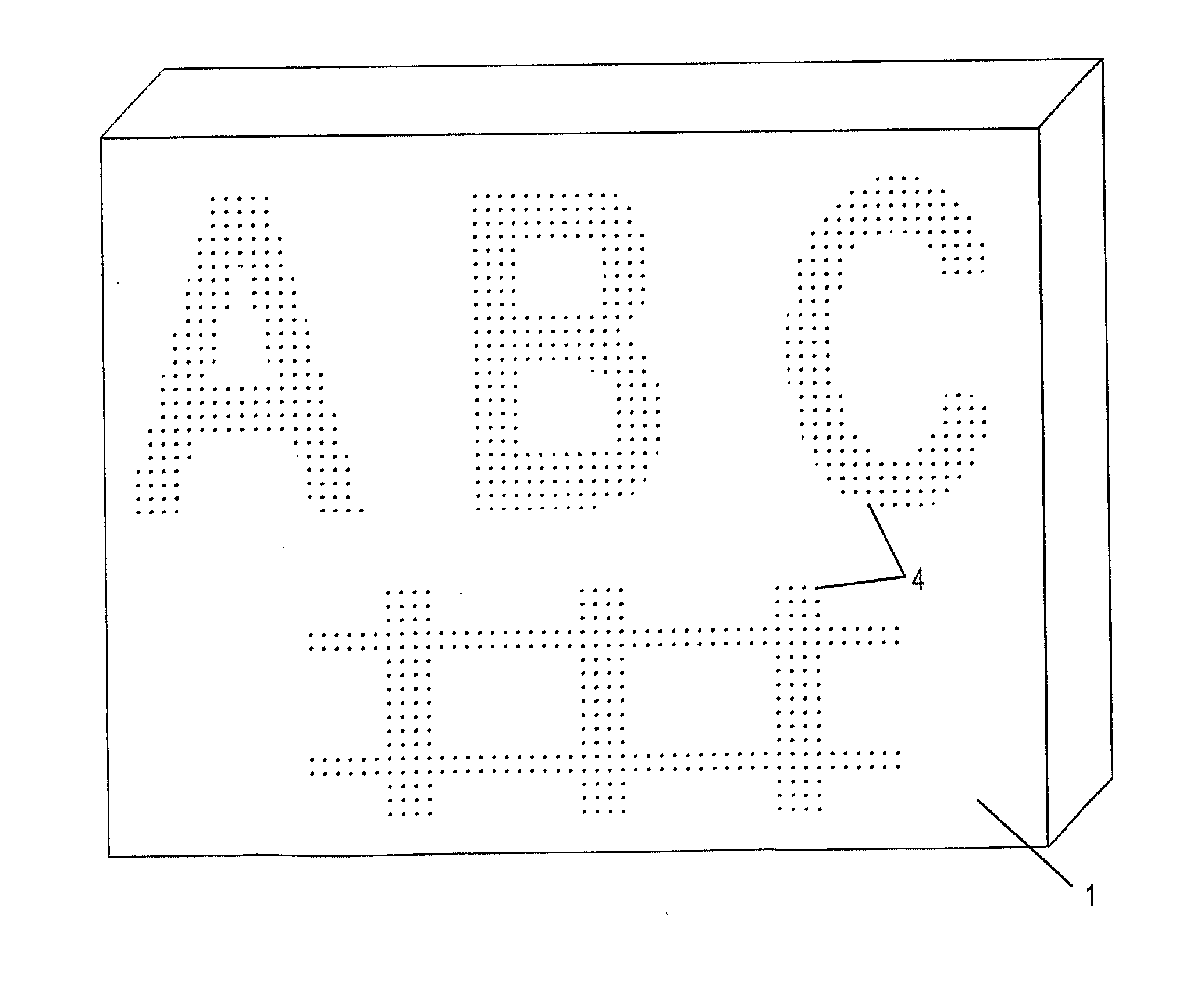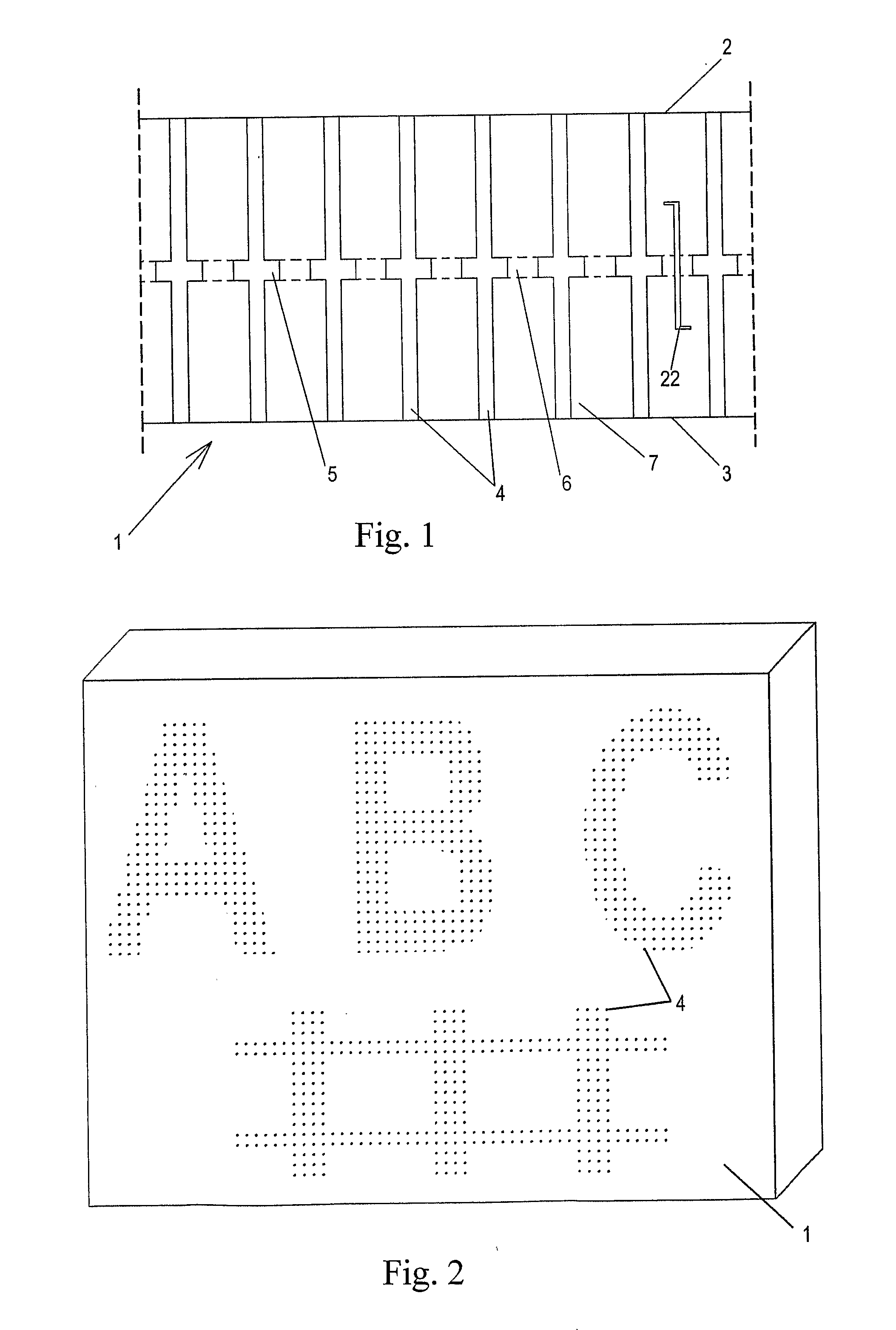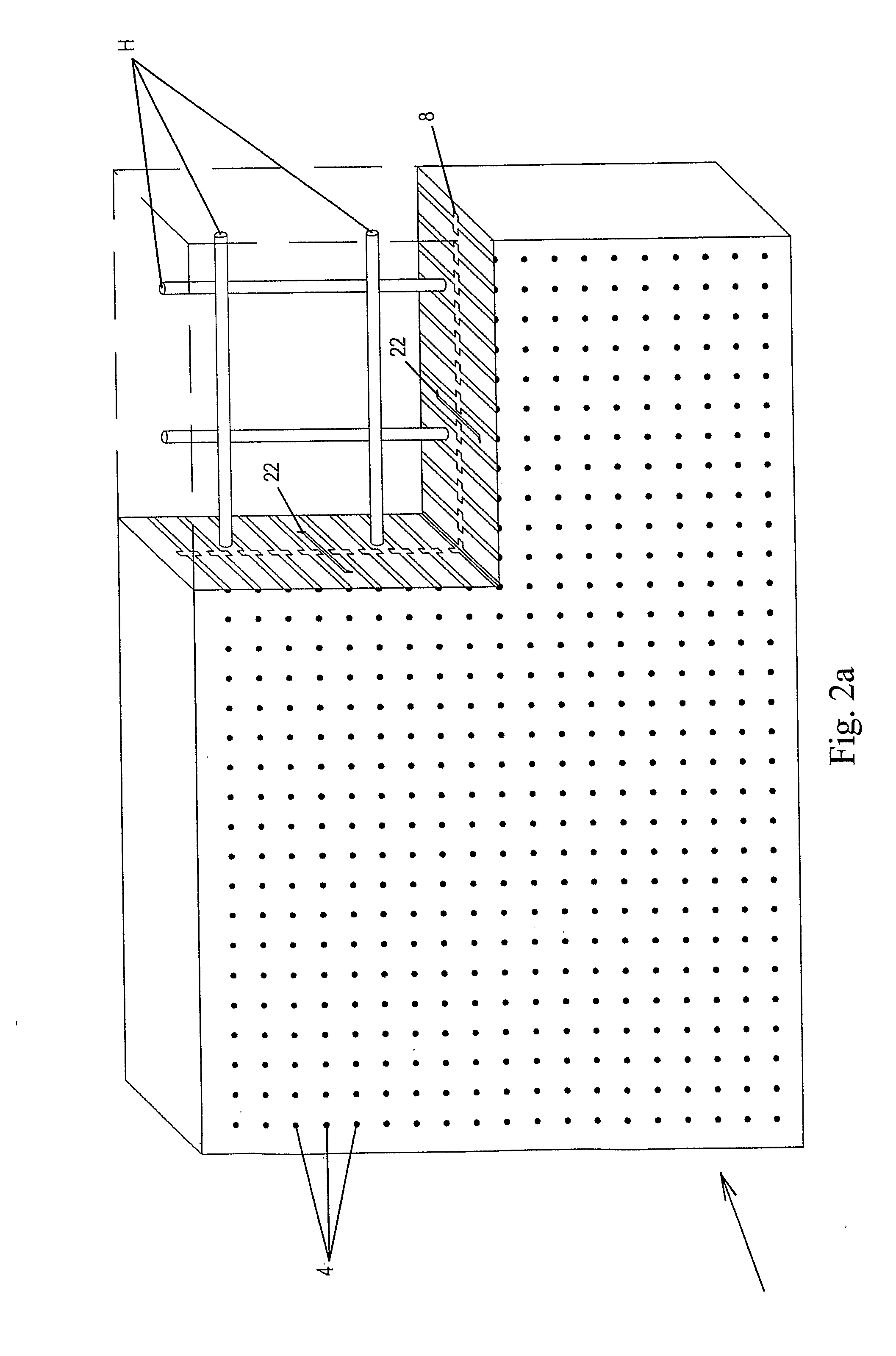Translucent building block and a method for manufacturing the same
a technology of building blocks and transparent materials, applied in the direction of lamination, structural elements, building components, etc., can solve the problems of inability to easily conform the properties of translucent materials to complex architectural requirements, the requirement of correct fitting of discrete elements, and the limited number and size of transparent members, etc., to achieve the effect of sufficient rigidity
- Summary
- Abstract
- Description
- Claims
- Application Information
AI Technical Summary
Benefits of technology
Problems solved by technology
Method used
Image
Examples
Embodiment Construction
[0044]FIG. 1. is a cross section of a preferred embodiment of the translucent building block according to the invention. The translucent building block 1 shown has at least two, namely a first and a second bounding surfaces 3. In order to have translucent property the building block 1 has to have at least one, a plurality in the drawing, relatively rigid translucent member 4 having surfaces—preferably but non exclusively—fairly polished, and arranged at least partly between the first and a second bounding surfaces 3, so that the translucent member 4 is surrounded by cast material 7. In this description the term “relatively rigid” means a mechanical property allowing the translucent member to bear forces acting in the course of the flow of cast material 7 during moulding, without permanent deformation. In a preferred embodiment not shown in the drawing the translucent members 4 may protrude beyond the bounding surfaces 2, 3, that is the translucent members 4 may poke out of the build...
PUM
| Property | Measurement | Unit |
|---|---|---|
| Length | aaaaa | aaaaa |
| Strength | aaaaa | aaaaa |
| Translucency | aaaaa | aaaaa |
Abstract
Description
Claims
Application Information
 Login to View More
Login to View More - R&D
- Intellectual Property
- Life Sciences
- Materials
- Tech Scout
- Unparalleled Data Quality
- Higher Quality Content
- 60% Fewer Hallucinations
Browse by: Latest US Patents, China's latest patents, Technical Efficacy Thesaurus, Application Domain, Technology Topic, Popular Technical Reports.
© 2025 PatSnap. All rights reserved.Legal|Privacy policy|Modern Slavery Act Transparency Statement|Sitemap|About US| Contact US: help@patsnap.com



